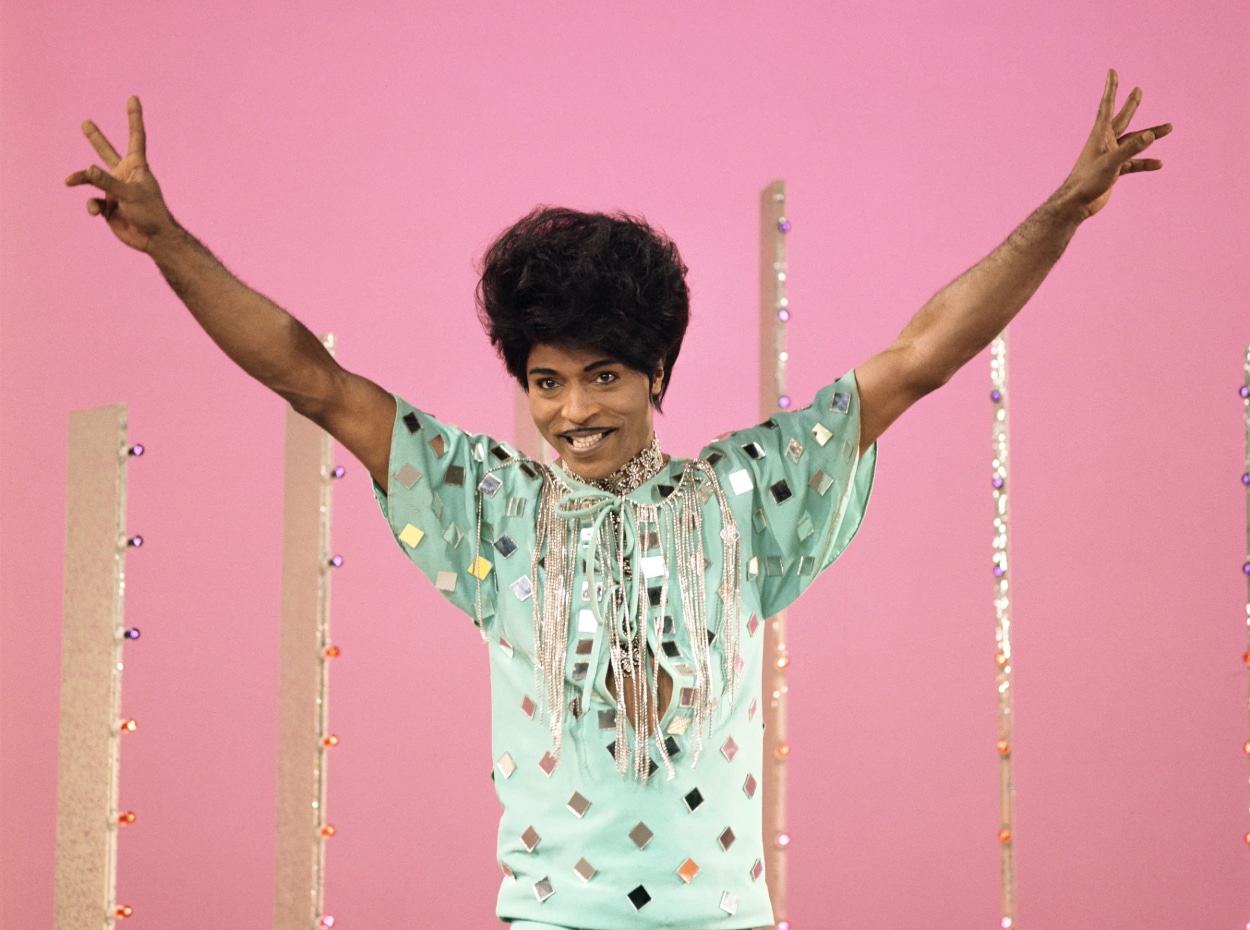“The beauty is still on duty!” Little Richard would whoop wildly as he pounded the piano keys, leaving no doubt who was in charge.
“I’m not conceited – I’m convinced!” he would exclaim.
A creature that irrepressibly self-actualized, Macon-born Richard Penniman, twirling his trademark parasol in a swirl of gnarly personal ambiguities, is finally getting some overdue recognition for his undeniable contributions as the self-anointed “architect of rock ‘n’ roll.” He has not yet filled the pages of a straightforward, scholarly biography, though, which would be hard-pressed to annotate his blazing originality and squealing mischief.
Happily, we have the next best thing with Here’s Little Richard, a 33-and-a-Third volume by London’s Jordan Bassett.
Beloved by music geeks as down-and-dirty primers in granular detail, this series of 179 books and counting has explored Bob Dylan, Nirvana, and Abba, among others. At a slim, compact 147 ages, it is more booklet than doorstopper, but it packs plenty of chewy facts for when “liner notes just aren’t enough,” according to Rolling Stone.
Spent my birthday signing books at @WaterstonesPicc ?Non-defaced copies are still available! pic.twitter.com/lbMzRqiI7i
— Jordan Bassett (@jordandbassett) November 9, 2023
Giddily nonbinary before that term even entered the lexicon, Little Richard – best known for “Tutti Frutti,” “Long Tall Sally,” and “Good Golly Miss Molly” – appears here in all his wild-eyed, gender-bending, sexual revolutionary glory.
Youthquake, anyone?
Bassett writes, “He was the most exciting person on the planet between 1955 and ’57, caked in Pancake 31 makeup, his waxy pompadour piled high, his leg splayed up on the piano as he belted out tracks that channeled his fondness – and there’s no delicate way to put this – for dogging and bumming . . . Richard was learning where a bit of sexed-up gospel might get you.”
We get fresh insights from Joan Jett, Sir Elton John, and Candi Staton along with cameos of Sister Rosetta Tharpe and, well, God. With stints as an ordained minister, Penniman has sallied back and forth, tracking stardust all over the South’s switchback dirt trail between the juke joint and the church; between flesh and spirit; and between men, women, and transgender folk. Through it all, Little Richard seems never to have wavered in his conviction that he is a beautiful and blessed “child of God,” and so are you. This anointing of Agape helps explain not only his triumphs but also his very survival in the repressive, Jim Crow South.
Finally, since his death in 2020, a worthy book tackles this Southern Gothic supernova, his revolutionary influence that is still felt to this day, and his rightful place as a fabulous social pioneer.
